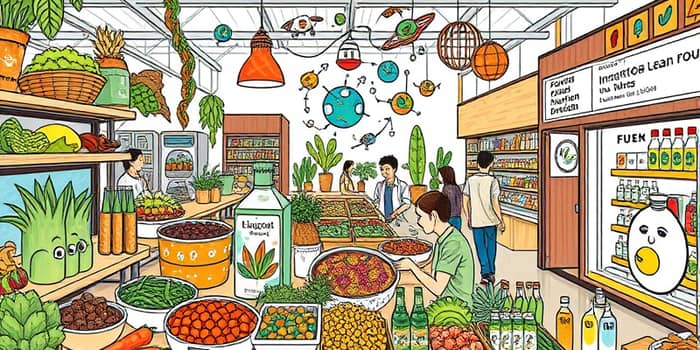
The food and beverage sector is on the cusp of transformative growth, driven by evolving consumer priorities, technological breakthroughs, and sustainability imperatives. With the global market projected to reach unprecedented heights by 2027, stakeholders must adapt and innovate to thrive in this dynamic landscape.
As of 2024, the global food and beverage market is forecasted to surpass $9.2 trillion by 2027, reflecting robust expansion across regions. The health and wellness segment alone, valued at around $805.9 million today, is poised for a compound annual growth rate (CAGR) of 9.8% through 2031.
Alternative proteins are another growth engine. Valued at $16.52 billion in 2024, they are expected to climb to $26.52 billion by 2030, potentially capturing up to 22% of the global protein market by 2035. In the United States, the industry supports nearly 1.7 million manufacturing jobs, underscoring its economic significance.
Consumers increasingly seek products that deliver tangible health benefits and ingredient transparency. The rise of personalized nutritional and health needs has spurred interest in precision wellness solutions, including custom meal kits and targeted supplements.
This shift reflects a broader willingness to invest in prevention and well-being, rather than solely treating illness.
Market momentum continues for plant-based diets and lab-grown proteins as consumers weigh health, environmental and ethical considerations. Established brands and startups alike are innovating with pea, soy, insect, and cellular agriculture sources to improve taste, texture, and nutritional profiles.
The alternative protein sector’s rapid evolution is supported by venture capital and public funding, enabling research into novel scaffolding techniques and fermentation-based processes. These developments aim to reduce reliance on traditional livestock and lower carbon footprints.
Environmental stewardship is no longer optional. Consumers now demand environmental and social responsibility from brands, pushing companies to disclose sourcing origins and production practices. Initiatives such as regenerative agriculture, fair trade partnerships, and zero-waste packaging are becoming baseline expectations.
Blockchain and other traceability tools allow end-to-end visibility, reassuring shoppers that their purchases align with personal values.
Advancements in automation and data analytics are revolutionizing supply chains. Through AI-powered supply chain optimization, organizations can forecast demand with unprecedented accuracy, minimize spoilage, and streamline inventory management.
Robotics tackle repetitive tasks—from precision cutting to packaging—addressing chronic labor shortages. Predictive analytics enhance quality control by detecting anomalies before products leave the factory floor.
Blockchain integration further elevates transparency, enabling consumers and regulators to verify every step of the journey from farm to fork.
The digital era has redefined how people purchase and consume food and beverages. Online grocery platforms and app-based delivery services are now ubiquitous, and consumers expect rapid, contactless fulfillment.
Simultaneously, demand is surging for ready-to-drink and functional beverages designed for on-the-go lifestyles. Hydration drinks infused with electrolytes, mood-boosting botanicals, and energy blends targeting focus and endurance are topping sales charts.
Different product categories are experiencing unique innovation waves. Below is a concise overview of major sub-sectors:
Younger generations are driving adventurous purchasing behaviors, seeking novelty and digital engagement. They gravitate towards brands that mirror their values and offer immersive experiences.
Emerging markets in Asia and Eastern Europe are witnessing rapid Westernization of tastes, notably in coffee consumption and convenience foods. Simultaneously, a resurgence of provenance-based products caters to discerning shoppers desiring authenticity.
A holistic focus on holistic mental and emotional well-being has spawned products claiming stress reduction, mood enhancement, and cognitive support.
Looking ahead, several noteworthy trends are poised to accelerate in the coming years:
The food and beverage industry stands at a crossroads where innovation, sustainability, and consumer engagement converge. Organizations that embrace emerging technologies, commit to transparent practices, and prioritize consumer wellness will lead the next wave of growth.
By fostering cross-industry collaboration, investing in research, and listening to evolving consumer voices, stakeholders can ensure a resilient, thriving marketplace that nourishes both people and the planet.
The future of food and beverage is rich with possibility—now is the time to shape it with intention and bold vision.
References













